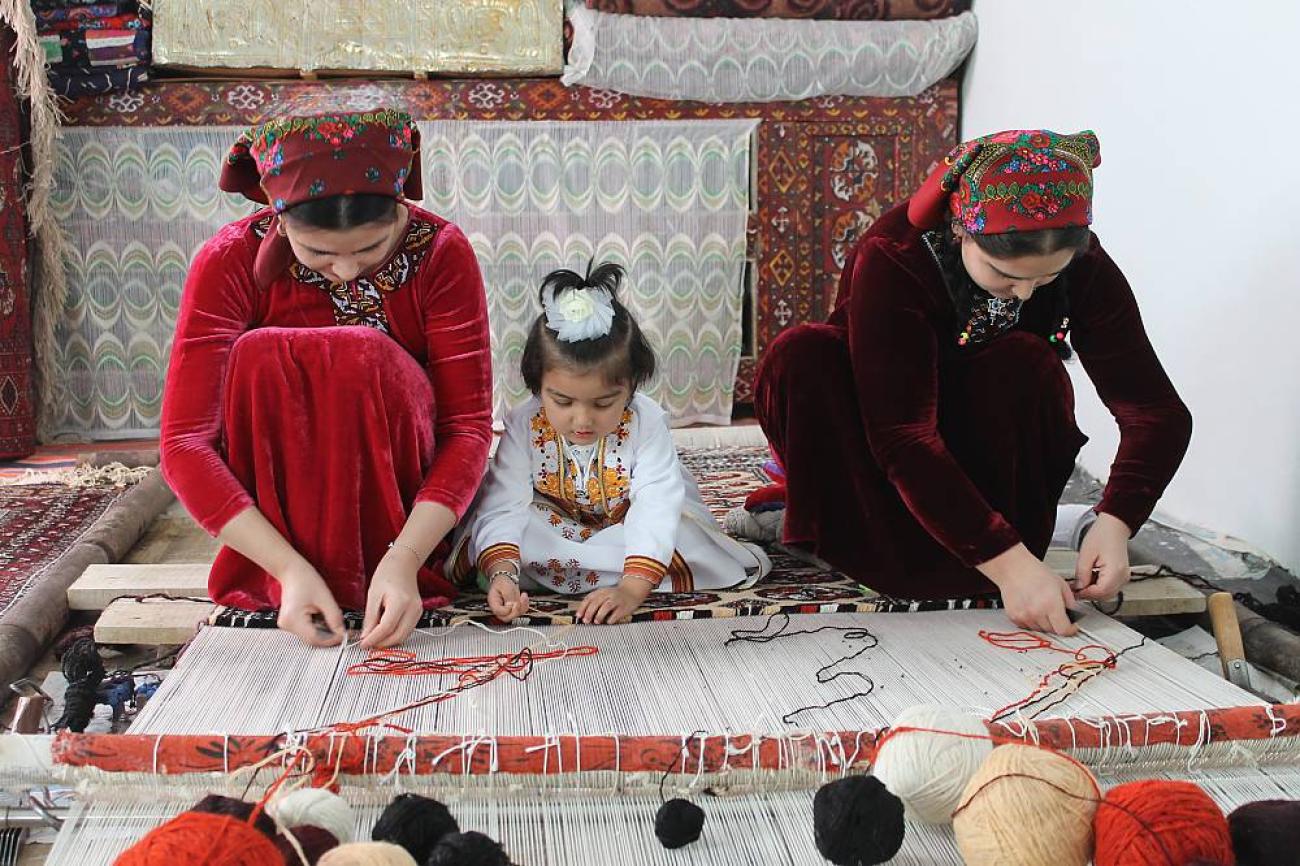The 14th Session of the Intergovernmental Committee for the Safeguarding of the Intangible Cultural Heritage met in Bogota, Colombia from 9 to 14 December 2019
In the course of six days, the twenty four members of the Intergovernmental Committee took stock of recent developments in the implementation of the 2003 Convention and make important decisions about its implementation. As is the case every year, the Committee considered elements for inscription on the Lists of the Convention.
Following the decision of the Committee, traditional Turkmen carpet making art in Turkmenistan inscribed on the Lists of Intangible Cultural Heritage. Traditional Turkmen carpet making art in Turkmenistan relates to the production of traditional, beautifully ornamented, hand-woven woolen Turkmen carpets and carpet products. The carpets are dense in texture and ornamented with coloured patterns pertaining to one of the five main Turkmen tribes, serving as a sign of cultural identity. The context in which the carpet weaver lives – including local flora and fauna – is reflected in the carpet design. The carpets serve both as floor coverings and wall decorations, and special carpets are also woven for specific occasions.
Dr Kuvandyk Poladov (R.I.P) who acted as the Secretary- General of the Turkmenistan National Commission for UNESCO for decades had a key role in this nomination.
In November 2017, UNESCO Tehran Cluster Office organized an Intangible Cultural Heritage community-based inventorying workshop with focus on Turkmen carpet in cooperation with the Turkmenistan National Commission for UNESCO and the Ministry of Culture of Turkmenistan. This practical workshop brought together participants from Intangible Cultural Heritage Unit of Ministry of Culture in Turkmenistan, Academy of Arts as well as Intangible Cultural Heritage practitioners.
During the 14th Session of the Intergovernmental Committee Meeting, five elements were registered on the List of Intangible Cultural Heritage in Need of Urgent Safeguarding, thirty-five elements were registered on the Representative List of the Intangible Cultural Heritage of Humanity and two elements were registered of the list of Good Safeguarding Practices.
The Committee meets annually to evaluate nominations proposed by States Parties to the 2003 Convention and decide whether or not to inscribe those cultural practices and expressions of intangible heritage on the Convention’s Lists.
For more information about Intangible Cultural Heritage please visit: https://ich.unesco.org/



